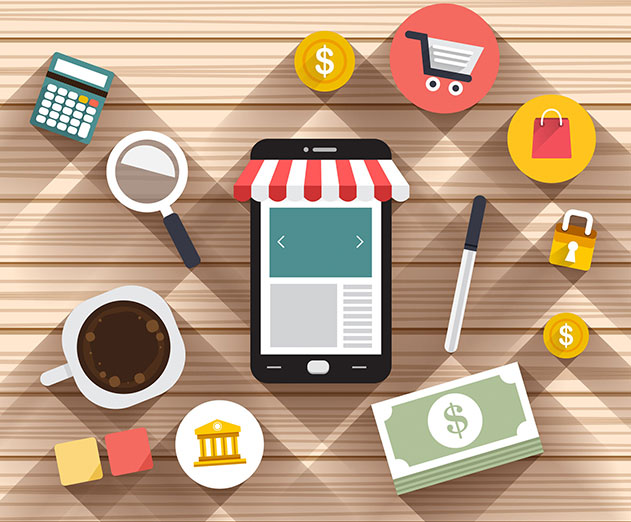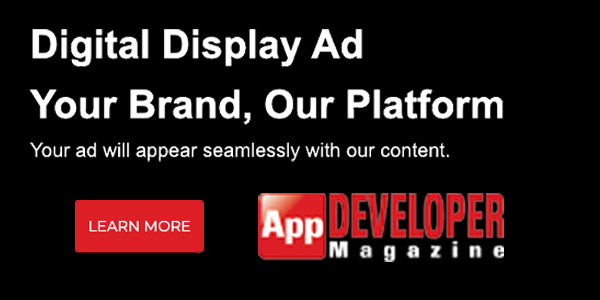Ad Mediation: The questions you should be asking
Tuesday, November 1, 2016

|
Dominic Bracher |
App advertising revenue is predicted to hit nearly $16 billion by 2017 in the US alone. This number is so significant that many top publishers focus their entire monetization strategy around mobile advertising, and are able to exist off the back of this revenue alone.
This rapid increase in ad spend has naturally led to a sharp rise in the number of demand sources through which developers can monetize their apps. However, with so many networks, exchanges and demand-side platforms (DSPs) to choose from, you’ve been presented with a new challenge. Which mediation platform should you be integrating in order to maximize your in-app advertising revenues?
To start out, let’s take a step back and look at why ad mediation exists. Mediation technology aggregates demand sources and helps to manage the entire ad monetization process through a single dashboard. To maximize yield, a mediation platform ensures the highest paying demand is prioritized in your ad ‘waterfall’.
A good mediation platform should make it much easier to add and manage multiple demand sources within an application. As a general rule of thumb, the more server-to-server demand sources a mediation platform supports, the better. Server-to-server integrations are preferred over software development kit (SDK) integrations, as these reduce the risk of SDK bloat and allow you to add and remove demand sources without having to update your app (and deal with all the maintenance issues this brings).
Ultimately, mediation platforms increase competition for your app’s supply, or impressions, which in turn results in better fill rates, eCPMs and revenue. You can compare different demand sources against one another for a single impression, and prioritize the highest paying demand to increase ad yield.
Handing monetization control to a mediation platform is a big responsibility, so trust is essential and this trust starts with understanding how a mediation platform makes money.
There are a number of ways a mediation company can make money, but not all are made clear to its customers. Some monetize their customer’s in-app data, while others are earning advertiser commission from the demand sources they have integrated.
However, the most damaging monetization model from your perspective is if a mediation platform has its own ads (demand) in the waterfall. In order for you to generate as much revenue as possible, a mediation platform should not favor any demand - especially not its own. By having its own demand in the mix, a mediation platform has a conflict of interest.
A new wave of transparent and unbiased mediation platforms monetize through upfront subscriptions and / or publisher revenue commission. My advice is that this is a price worth paying to avoid the hidden costs of having a mediation provider’s own demand taking the most valuable inventory.
Many mediation platforms adopt some form of ‘waterfall’ method when prioritizing the highest paying demand sources for a developer’s inventory - with some algorithms being more advanced than others.
To start with, it’s important to note that most mediation waterfalls are not real-time. In its most basic state, an ad waterfall is configured manually through a mediation provider’s dashboard, where a developer has to set the order they want networks to be called to show an ad (often assigning static eCPM values to each network to indicate value).
Some mediation platforms automatically update the eCPM values which are actually being paid out by each demand source, with this being done by connecting directly to the demand source’s reporting API. However, if a platform continues to call the highest paying demand source until all available ads from that source have been displayed, then this is sub-optimal.
The more advanced mediation platforms now go a step further, and have a machine learning component which weights network performance against the other demand sources in the waterfall. The reason for this is to help ensure the highest paying demand from each demand source is being shown first, meaning yields areas high as possible.
The above is utilized when trying to establish demand source prioritization of non-programmatic platforms. However, many mediation platforms now have access to exchanges and DSPs which compete for inventory in real-time, with the winning real-time bid being compared to the highest predicted paying demand source in the waterfall.
Above all, if a mediation platform does have its own demand within the ad waterfall, then you need to understand how this is handled. Does the mediation platform’s own demand always take the first impression? If this is the case, then the most valuable inventory is non-competitive, and this can have a significant impact on your earnings potential.
If you are using, or considering integrating, a mediation platform which has an automated waterfall, then it’s important you have the ability to override this algorithm. This isn’t because you should try and beat the machine, but so you can still utilize eCPM floors which may be offered to you by your demand partners.
However, as Christian Calderon, CRO at Ketchapp explains, eCPM floors need to be implemented with caution: “When being offered a guaranteed eCPM for the first impression, developers always think they are getting a good deal. But they are in fact giving a network exclusive access to their most valuable inventory, and are making that impression non-competitive. This can have a negative effect on revenue.”
When using eCPM floors, you should let the demand source know that with that floor, they’re likely to get a very high percentage of the first impression traffic, but I would advise against granting them exclusive access.
By taking control of ad mediation through partnering with a trusted and transparent platform, you are given the power and insight you need to stay in control of your ad strategy and will - ultimately - maximize your revenue.
Read more: https://tapdaq.com/
This content is made possible by a guest author, or sponsor; it is not written by and does not necessarily reflect the views of App Developer Magazine's editorial staff.
This rapid increase in ad spend has naturally led to a sharp rise in the number of demand sources through which developers can monetize their apps. However, with so many networks, exchanges and demand-side platforms (DSPs) to choose from, you’ve been presented with a new challenge. Which mediation platform should you be integrating in order to maximize your in-app advertising revenues?
Why does ad mediation exist?
To start out, let’s take a step back and look at why ad mediation exists. Mediation technology aggregates demand sources and helps to manage the entire ad monetization process through a single dashboard. To maximize yield, a mediation platform ensures the highest paying demand is prioritized in your ad ‘waterfall’.
A good mediation platform should make it much easier to add and manage multiple demand sources within an application. As a general rule of thumb, the more server-to-server demand sources a mediation platform supports, the better. Server-to-server integrations are preferred over software development kit (SDK) integrations, as these reduce the risk of SDK bloat and allow you to add and remove demand sources without having to update your app (and deal with all the maintenance issues this brings).
Ultimately, mediation platforms increase competition for your app’s supply, or impressions, which in turn results in better fill rates, eCPMs and revenue. You can compare different demand sources against one another for a single impression, and prioritize the highest paying demand to increase ad yield.
How does a mediation platform make money?
Handing monetization control to a mediation platform is a big responsibility, so trust is essential and this trust starts with understanding how a mediation platform makes money.
There are a number of ways a mediation company can make money, but not all are made clear to its customers. Some monetize their customer’s in-app data, while others are earning advertiser commission from the demand sources they have integrated.
However, the most damaging monetization model from your perspective is if a mediation platform has its own ads (demand) in the waterfall. In order for you to generate as much revenue as possible, a mediation platform should not favor any demand - especially not its own. By having its own demand in the mix, a mediation platform has a conflict of interest.
To what extent do they optimize their own revenue versus yours?
A new wave of transparent and unbiased mediation platforms monetize through upfront subscriptions and / or publisher revenue commission. My advice is that this is a price worth paying to avoid the hidden costs of having a mediation provider’s own demand taking the most valuable inventory.
How is demand prioritized?
Many mediation platforms adopt some form of ‘waterfall’ method when prioritizing the highest paying demand sources for a developer’s inventory - with some algorithms being more advanced than others.
To start with, it’s important to note that most mediation waterfalls are not real-time. In its most basic state, an ad waterfall is configured manually through a mediation provider’s dashboard, where a developer has to set the order they want networks to be called to show an ad (often assigning static eCPM values to each network to indicate value).
Some mediation platforms automatically update the eCPM values which are actually being paid out by each demand source, with this being done by connecting directly to the demand source’s reporting API. However, if a platform continues to call the highest paying demand source until all available ads from that source have been displayed, then this is sub-optimal.
The more advanced mediation platforms now go a step further, and have a machine learning component which weights network performance against the other demand sources in the waterfall. The reason for this is to help ensure the highest paying demand from each demand source is being shown first, meaning yields areas high as possible.
The above is utilized when trying to establish demand source prioritization of non-programmatic platforms. However, many mediation platforms now have access to exchanges and DSPs which compete for inventory in real-time, with the winning real-time bid being compared to the highest predicted paying demand source in the waterfall.
Above all, if a mediation platform does have its own demand within the ad waterfall, then you need to understand how this is handled. Does the mediation platform’s own demand always take the first impression? If this is the case, then the most valuable inventory is non-competitive, and this can have a significant impact on your earnings potential.
What control do you have?
If you are using, or considering integrating, a mediation platform which has an automated waterfall, then it’s important you have the ability to override this algorithm. This isn’t because you should try and beat the machine, but so you can still utilize eCPM floors which may be offered to you by your demand partners.
However, as Christian Calderon, CRO at Ketchapp explains, eCPM floors need to be implemented with caution: “When being offered a guaranteed eCPM for the first impression, developers always think they are getting a good deal. But they are in fact giving a network exclusive access to their most valuable inventory, and are making that impression non-competitive. This can have a negative effect on revenue.”
When using eCPM floors, you should let the demand source know that with that floor, they’re likely to get a very high percentage of the first impression traffic, but I would advise against granting them exclusive access.
By taking control of ad mediation through partnering with a trusted and transparent platform, you are given the power and insight you need to stay in control of your ad strategy and will - ultimately - maximize your revenue.
Read more: https://tapdaq.com/
This content is made possible by a guest author, or sponsor; it is not written by and does not necessarily reflect the views of App Developer Magazine's editorial staff.

Become a subscriber of App Developer Magazine for just $5.99 a month and take advantage of all these perks.
MEMBERS GET ACCESS TO
- - Exclusive content from leaders in the industry
- - Q&A articles from industry leaders
- - Tips and tricks from the most successful developers weekly
- - Monthly issues, including all 90+ back-issues since 2012
- - Event discounts and early-bird signups
- - Gain insight from top achievers in the app store
- - Learn what tools to use, what SDK's to use, and more
Subscribe here




_cptybzmh.jpg)








